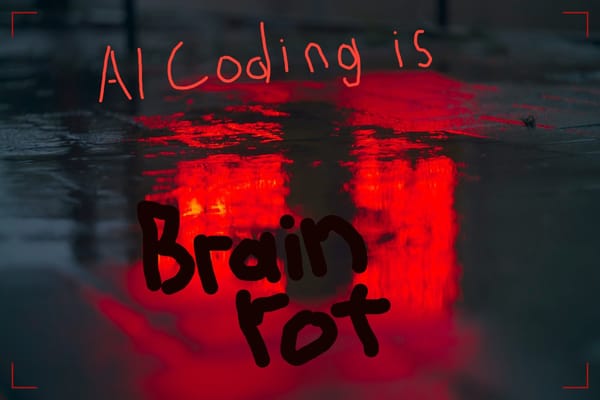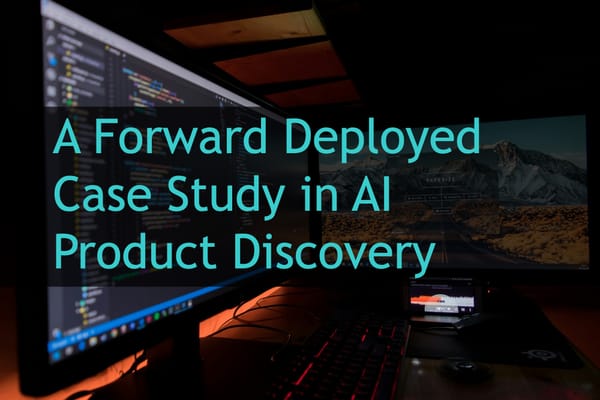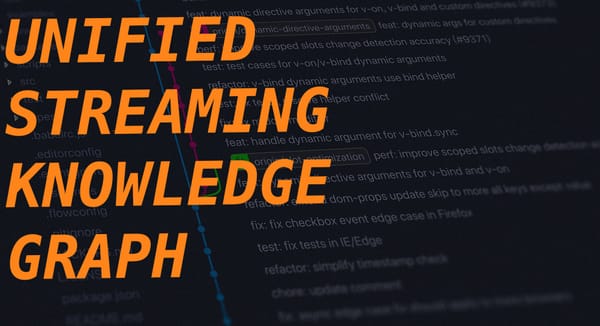Under the Hood: Audetic’s Tech Stack
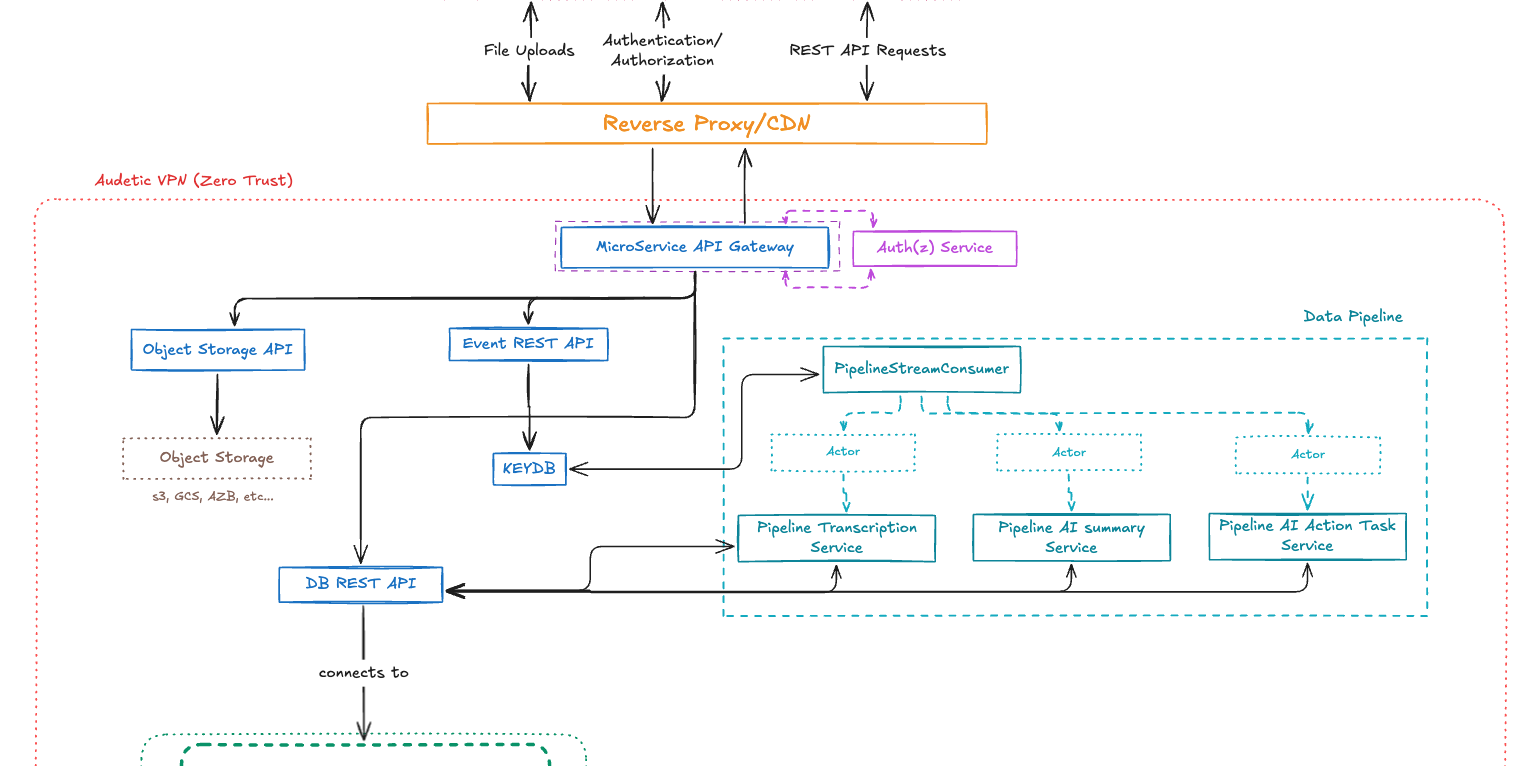
For Audetic, I’m not just cranking out features as fast as possible, I’m crafting a platform that’s scalable, secure, and built for the long haul. My engineering approach is slow and steady for this one and in this post, I’m going to share a glimpse into the (early) architecture and CI/CD pipeline that power Audetic.
A Modular, Event-Driven Architecture
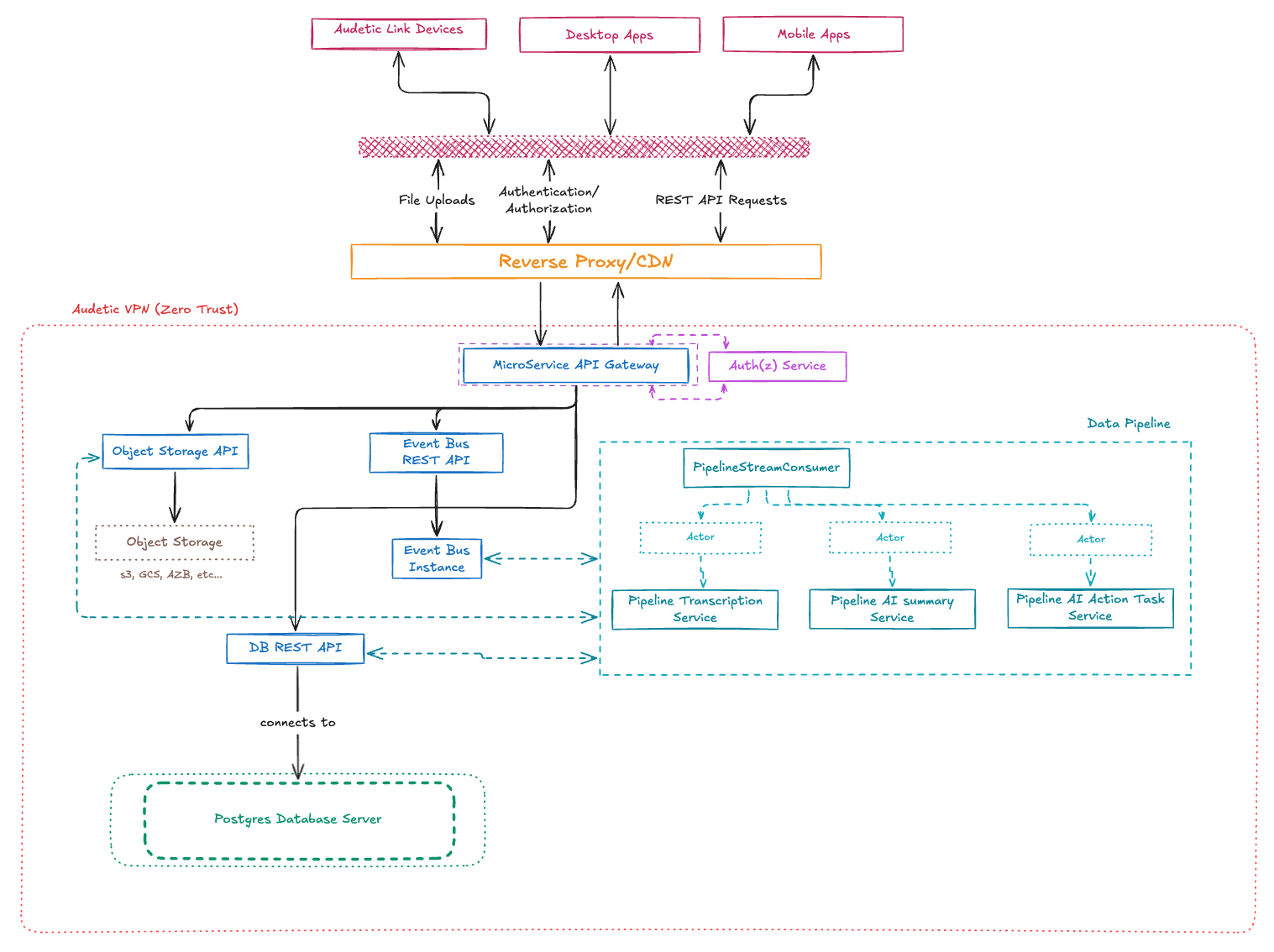
I’ve designed Audetic’s system as a collection of loosely coupled microservices, each handling a specific task, from capturing audio and generating transcriptions to delivering AI-driven insights and actions. Here’s what makes it tick:
- Modular Design: Every microservice is independent, allowing me to swap or upgrade components without disrupting the whole system.
- Event-Driven Data Pipeline: I use a lightweight KeyDB instance as an event bus for near real-time communication between services. This decoupled setup lets me quickly spin up new pipeline jobs to tackle emerging market needs. I can also swap out KeyDB for more robust streaming technology, like Kafka.
- Central API Gateway: At the core of our cloud services is a robust API Gateway. I rely on it to manage traffic, authentication, rate limiting, logging, and audit trails—all within a secure, VPN-protected environment.
Lightweight Clients, Heavy-Duty Processing
My design philosophy prioritizes efficiency:
- Slim UI Clients: I keep the UI lean, focusing solely on user interactions and visualization.
- Offloaded Processing: Intensive tasks are handled by specialized command-line tools and cloud microservices I’ve built in Swift, Scala, and Python. This keeps the client fast and the heavy lifting in the cloud.
Powerful Data Pipeline & Scalable Processing
The heart of Audetic’s processing power lies in its data pipeline:
- Scala-Powered Pipeline: I’ve built the pipeline in Scala, leveraging functional programming for high-performance transformations. It handles tasks like transcription, AI summary generation, and insight extraction with minimal overhead.
- Acyclic Job Flow: I use actor-based jobs triggered by the event consumer, processing data in a clean, acyclic manner. This makes it easy to extend functionality for new customer use cases.
Enterprise-Grade Security
Security is non-negotiable for me. Here’s how I keep Audetic’s platform locked down:
- Tenant Isolation with Postgres RLS: I enforce strict data separation using Postgres’ Row-Level Security, ensuring each tenant’s data stays isolated.
- Private Networks & TLS-Protected Gateways: My internal microservices communicate within a private network, and all public APIs are secured with TLS encryption and robust authentication.
- Zero-Trust & End-to-End Encryption: I verify every access request under a zero-trust model, and data is protected in transit and at rest with AES-256 encryption.
- Encrypted Storage: Customer files are stored on encrypted volumes, adding an extra layer of protection against breaches.
Automated CI/CD: Agility Meets Scalability
I’ve designed Audetic’s CI/CD pipeline to be as adaptable as the platform itself:
- Containerized Deployments: Every microservice is Dockerized, making it portable across DigitalOcean, AWS, on-premise setups, or any cloud provider I choose.
- GitHub Actions for Automation: I use GitHub Actions to automate testing, building, and deployment, enabling rapid scaling as user demand grows.
- Cloud-Agnostic Infrastructure: With containerization and my CI/CD tools, I’m not locked into any single provider. I can move seamlessly between DigitalOcean, AWS, or on-premise infrastructure based on business needs.
- Observability & Performance Monitoring: I’ve integrated OpenTelemetry with HyperDX(now ClickHouse) to collect logs, traces, and metrics from every service. I’ve been a fan of what the HyperDX team is building, and this setup lets me troubleshoot issues quickly and optimize performance proactively.
Architecture as a Competitive Edge
For me, great architecture isn’t just a technical necessity, it’s a strategic advantage. By designing Audetic with multi-tenant support, robust security, and scalable microservices from the start, I’ve avoided the need for costly rearchitecting down the road. My CI/CD pipeline ensures every update is thoroughly tested and deployed seamlessly, giving me the agility to meet evolving market demands.
Looking Ahead
I’m building Audetic with the future in mind:
- Enterprise-Grade Foundations: As Audetic grows, my architecture will support advanced multi-tenancy features, collaboration, compliance, and performance at scale.
- Continuous Improvement: With over a decade of experience building software for startups, I’m committed to iterating on the platform, integrating lessons learned to keep the tech stack robust and ready for tomorrow’s challenges.
I believe Audetic’s architecture gives both me and my customers a decisive edge. This post is just the beginning of what’s under the hood at Audetic. Stay tuned for more deep dives into specific components of my tech stack in future posts!


